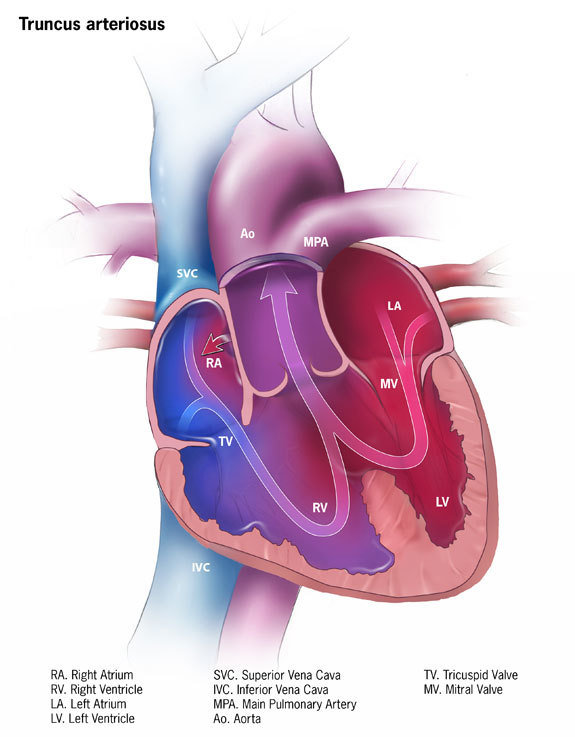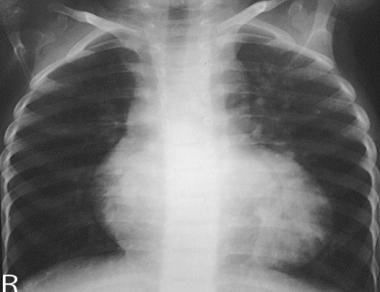Persistent truncus arteriosus
by Georgia Jarmolkiewicz
What is it?
It is a congenital disorder.
This happens when the embryological structure known as the truncus arteriosus fails to properly divide into the pulmonary trunk and aorta, leaving the appearance of an underdeveloped septum.
This means oxygenated blood and deoxygenated blood can mix within the heart, causing this mix of blood to circulate the body.
- cyanosis - Cyanosis is the appearance of a blue or purple coloration of the skin or mucous membranes due to the tissues near the skin surface having low oxygen saturation.
- heart murmurs are common
- heart failure often occurs within weeks of birth
- bounding arterial pulses
- cardiomegaly - an enlarged heart
- Loud second heart sound
- hypocalcaemia -low serum calcium levels in the blood.
Most babies suffering from persistent truncus arteriosus die within 2 weeks if not less. In exceptional cases, sufferers can live into adulthood without treatment.
What PROBLEMS DOES THIS CAUSE? (SYMPTOMS)
- Diuretics - these pills increase the frequency and volume of urination, stopping fluid from collecting in the body, which is a common symptom of heart failure.
- Lonotropic agents - this medication strengthens the heart's beats.
Surgery is also an option, and different surgeries suit different cases, however these procedures are most common:
- Close the hole between the two ventricles with a patch
- Separate the upper portion of the pulmonary artery from the single large vessel
- Implant a tube (conduit) and valve to connect the right ventricle with the upper portion of the pulmonary artery — creating a new, complete pulmonary artery
- Reconstruct the single large vessel and aorta to create a new, complete aorta
WHAT TREATMENT IS AVAILABLE?


Bibliography
- https://www.nlm.nih.gov/medlineplus/ency/article/001111.htm
- http://www.mayoclinic.org/diseases-conditions/truncus-arteriosus/basics/definition/con-20024974
- http://emedicine.medscape.com/article/892489-overview
- http://www.cincinnatichildrens.org/health/t/truncus/
Persistent truncus arteriosus
By georgie0805
Persistent truncus arteriosus
- 225



